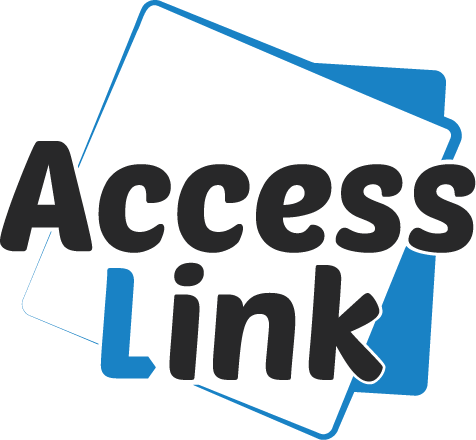Search engine visibility depends on many factors and SEO (Search Engine Optimization) remains a powerful lever to grow it over time.
To support that growth, two complementary approaches are often used: on-site SEO and off-site SEO.
But what exactly sets them apart?
| On-Site SEO | Off-Site SEO |
|---|---|
| HTML tags (H1, title, meta) | Backlinks (external links) |
| Naturally integrated keywords | Link quality (reliable sources) |
| High-value content | Social mentions |
| Image compression and relevance | Guest blogging |
| Fast page load speed | Forums and online communities |
| Logical site structure | Local business directories |
| Mobile-friendly (responsive) design | Social signals |
These two approaches influence how your website appears in the SERP and help shape a strong, trustworthy link profile over time.
What Is On-Site SEO?
On-site SEO refers to everything you can adjust directly on your website to improve how it appears in search results. It includes actions you take on your own pages to make them more appealing? both to users and to search engines like Google.
This approach focuses on improving your site’s structure, content, and overall performance so it aligns with what search engines are looking for, including internal linking strategies that guide both users and search engines through your key pages.
Think of Google as a visitor checking out your site: to make a good impression, every page should be well built, easy to read, and quick to load.
What On-Site SEO Is Made Of
On-site SEO techniques help improve your site’s visibility while offering a smooth and useful experience for visitors.
HTML Tags
These tags send important signals to search engines. Heading tags (H1, H2, etc.) create a clear content hierarchy, making your pages easier to read and understand.
The title tag (which appears in the browser tab) and the meta description (the short preview shown in search results) also play a role in drawing users to click.
Keywords
Keywords are the core of your content. It’s important to choose relevant terms and use them naturally throughout the page, not forcefully.
They should appear in headings, subheadings, body text, and even in image captions, always blending into the content in a way that makes sense to both readers and search engines.
Content Quality and Relevance
Strong content sits at the center of any on-s SEO strategy — but it’s not about stuffing your pages with keywords. What matters is offering something useful, clear, and well structured.
Search engines tend to favor pages that are informative, helpful, and well written. Quality content not only draws visitors in, it keeps them engaged — which can lead to better rankings over time.
Always aim to meet the reader’s needs, bring real value, and stay focused on what’s truly relevant.
L’optimisation des images
Images should be lightweight so they don’t slow down your site. Use appropriate formats like JPEG or PNG, but when possible, go for newer formats like WebP for faster loading.
Don’t forget to fill in the alt tags with short, descriptive text that includes relevant keywords, this helps improve your visibility in Google Images as well.
Page Speed
Fast-loading websites are better for both users and search engines. Improving your site’s technical performance by compressing files, reducing JavaScript load, and choosing reliable hosting helps keep things running smoothly.
Site Architecture
A clear, well-organized navigation structure makes it easier for search engines to explore and index your pages. Smart internal linking also guides users to discover related content, which improves the overall experience.
Responsive Design
With mobile browsing now standard, your site should work just as well on smartphones and tablets as it does on desktop. A responsive design ensures consistency and comfort across all screen sizes.
Common On-Site SEO Mistakes to Avoid
Getting your on-site SEO right matters, but the line between smart improvements and overdoing it can be surprisingly thin.
- Keyword Overuse: Packing too many keywords into your content can make it feel forced and unnatural, and that’s exactly the kind of thing search engines tend to flag.
- Duplicate Content: Publishing identical or near-identical content across multiple pages can hurt your site’s performance in search rankings.
Thankfully, there are tools that can help you spot and avoid these mistakes.
- YourTextGuru: This tool helps you integrate a wide range of keywords into your content, including ones you may not have considered, while keeping everything balanced and natural.
- Kill Duplicate: Use this tool to detect if other websites have copied your content, which could create duplicate content issues beyond your control.
- 12pages: Wondering if you need one page or two to cover a topic? 12pages helps you avoid overlapping content that targets the same search intent.
What Is Off-Site SEO?
Unlike on-site SEO, off-site SEO refers to all the actions taken outside your website to increase its visibility and reputation.
While on-site efforts focus on internal structure and content, off-site SEO works beyond your own pages to build your site’s credibility, mainly through external links (backlinks) and social signals.
The main goal is to strengthen your site’s authority in the eyes of search engines, using incoming links from other sources.
For example, Accesslink helps you build backlinks in under 24 hours starting at just €2 with the discovery offer maki,ng it one of the fastest and most affordable ways to boost your domain’s authority.
Link building is one of the most important aspects of off-site SEO. The more high-quality backlinks point to your site, the stronger your link profile becomes, boosting your site’s authority in the eyes of search engines.
You can think of off-site SEO as your site’s online reputation, the more trusted websites vouch for you, the more credible your site appears, which can lead to better rankings.
Basics of Off-Site SEO
Off-site SEO focuses on increasing your website’s popularity by building quality links and fostering meaningful interactions beyond your site.
Backlinks
Backlinks — or inbound links — are links from other websites pointing to yours. Think of them as recommendations: when a reputable site links to your content, it tells search engines that your site is worth trusting.
But it’s not about collecting random links. What matters is the quality, search engines pay more attention to links that come from credible, relevant sources within your field.
Want to learn more? We break down the different types of backlinks in a dedicated article.
Link Quality Matters
Not all backlinks are created equal. Links from trustworthy, well-established websites that are relevant to your field carry far more weight than links from questionable sources.
In fact, links from low-quality sites or “link farms” can actually hurt your rankings. That’s why a selective, quality-focused link building strategy is far more effective than simply chasing volume.
Mentions and Social Signals
Social signals such as mentions, shares, and likes are not direct ranking factors, but they do increase your site’s visibility and perceived credibility.
When content is shared and discussed, it shows genuine interest. That attention can lead to new visitors and even attract backlinks naturally over time.
A Google Business Profile
A well-built Google Business profile can significantly increase your visibility, not just on Google itself, but also in the eyes of potential visitors.
Make sure your profile is complete and up to date: title, opening hours, services, photos, and more. A high number of positive reviews with a strong average rating often leads to increased traffic to your website.
Bonus: it also improves your chances of showing up in Google Maps.
Guest Blogging
Publishing guest posts on blogs or websites within your industry is a smart way to grow your reach. In exchange for a relevant, high-quality article, you get a backlink to your site, which supports your off-site SEO and brings in a new audience.
Forums and Online Communities
Getting involved in discussions on forums or niche groups related to your field can also support your off-site SEO. When relevant, you can include a link to your site as part of a helpful contribution.
This is a great way to demonstrate your expertise, create valuable interactions, and attract qualified visitors.
However, spammy comments or irrelevant links can damage your reputation and are often ignored by search engines.
Local Directories and Listings
For local businesses, registering on local platforms and directories (like Google Business Profile, Yelp, or industry-specific listings) is a valuable step.
These listings help build credibility and improve your visibility in local search results.
Off-Site SEO Mistakes to Avoid
Just like on-site SEO, off-site efforts can backfire if handled poorly. Here are some common missteps to watch out for:
- Having no off-site strategy at all: One of the biggest mistakes is simply not having a plan. A scattered or passive approach leads to missed opportunities and limited growth.
- Using very low-quality backlinks: While Google tends to ignore poor-quality links rather than penalize them directly, relying on them is still a waste of time and budget. Focus on building links that actually carry weight.
- Overlooking social mentions: Being active on social media won’t boost your rankings directly, but it can increase visibility, encourage sharing, and help attract natural backlinks over time.
- Over-optimizing anchor text: This tactic was heavily abused in the past. As a result, Google rolled out the Penguin filter to reduce the impact of unnatural or overly repeated anchor patterns. Keep your anchors diverse and context-friendly.
Want to go deeper? Check out our article on the most common link building mistakes and how to avoid them.
Why Combine On-Site and Off-Site SEO?
Bringing together both on-site and off-site SEO is the best way to build a strategy that’s consistent and long-lasting.
On-site SEO helps you shape a well-structured, fast, and relevant website, one that search engines can understand and users can enjoy. But even the best content needs outside signals to earn credibility. That’s where off-site SEO comes in, through backlinks, mentions, and online visibility.
Both work hand in hand: on-site SEO ensures a smooth experience and strong internal foundation, while off-site SEO builds your site’s reputation and helps attract more visitors over time.
How Do You Know if You Should Improve On-Site or Off-Site SEO?
If you’re unsure where your SEO efforts should focus, a full audit is the best place to start.
If your content is solid but your site isn’t showing up in search results, you likely need to strengthen your off-site SEO. Building high-quality backlinks and gaining external mentions can help boost your site’s visibility and credibility.
On the other hand, if you’re getting traffic but have a high bounce rate or poorly ranked pages, it’s time to work on your on-site SEO. Improving your site’s structure, keyword relevance, and loading speed can enhance the user experience and your position in the search results.
On-Site and Off-Site SEO: One Doesn’t Work Without the Other
On-site and off-site SEO are both fundamental pillars of an effective long-term search strategy.
Each contributes in its own way, one builds structure and clarity, the other boosts reach and trust. Together, they create a stronger presence on search engines.
You might see some progress focusing on just one. But without the balance of both, your results will be shaky and you’ll never tap into your site’s full potential.
A well-balanced strategy combines strong internal linking and on-site performance with a natural link profile powered by authoritative backlinks and off-site SEO efforts.

